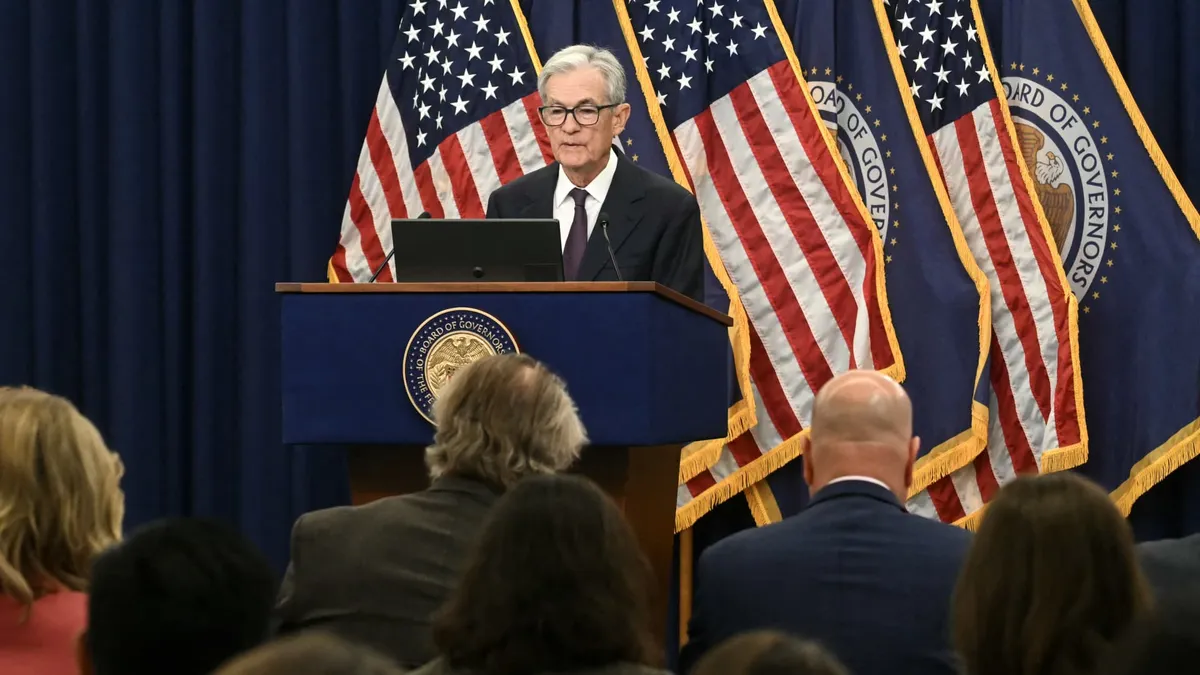
On Wednesday, the Federal Reserve approved its second straight interest rate cut, marking a significant moment in monetary policy. The decision, made by a 10-2 vote, lowered the benchmark overnight borrowing rate to a range of 3.75%-4%. However, Chair Jerome Powell created uncertainty in the markets by suggesting that another rate reduction might not occur in December.
In addition to the interest rate cut, the Fed announced that it would be ending its program of quantitative tightening (QT) on December 1. This process, which has seen the central bank gradually reduce its asset purchases, will now come to a halt. While Governor Stephen Miran voted against the cut, advocating for a quicker adjustment with a half-point reduction, Kansas City Fed President Jeffrey Schmid dissented for the opposite reason, preferring to maintain the current rate.
The interest rate set by the Fed serves as a benchmark for various consumer products, including auto loans, mortgages, and credit cards. However, the post-meeting statement offered little guidance regarding the Fed's plans for its December meeting. At the previous meeting in September, officials hinted at the possibility of three total rate cuts within the year.
Despite initial positive reactions from the stock market following the rate cut announcement, stocks declined after Powell's comments cast doubt on future rate cuts. Traders had anticipated an 85% probability of another reduction at the December meeting, according to the CME Group's FedWatch tool. Powell indicated that there were strongly differing views within the committee regarding the next steps, emphasizing that another rate cut is not guaranteed.
The Fed's decision comes at a time when economic data has been scarce. Recent government actions have suspended most data collection, leaving key metrics like nonfarm payrolls and retail sales unavailable. The committee acknowledged this uncertainty in its statement, noting that available indicators suggest moderate economic expansion. Job growth has slowed, and while the unemployment rate remains low, it has seen a slight increase this year.
Inflation rates have risen since the start of the year, currently hovering above the Fed's 2% annual target. The latest Consumer Price Index (CPI) report indicated an annual inflation rate of 3%, influenced by rising energy costs and items linked to tariffs implemented during the Trump administration. The Fed aims to balance between achieving full employment and maintaining stable prices, yet officials are increasingly concerned about the risks posed by the labor market.
Along with the interest rate cut, the Fed announced the end of its program to reduce its holdings of bonds from its substantial $6.6 trillion balance sheet. This QT program had effectively reduced the Fed's treasury and mortgage-backed securities by $2.3 trillion. Instead of continuously rolling off maturing proceeds, the Fed will now reinvest these proceeds into shorter-term bills.
As economic conditions evolve, markets had anticipated the end of QT either in October or by the year's end. The Fed had expanded its balance sheet significantly during the Covid crisis, increasing it from just over $4 trillion to nearly $9 trillion. Powell has indicated that while the Fed aims to reduce its holdings, a return to pre-pandemic levels is unlikely. Some analysts, such as Evercore ISI's Krishna Guha, suggest that the Fed may need to restart purchasing bonds as early as 2026 to support organic growth.
Historically, the Fed's decision to ease monetary policy is rare during economic expansions and bull markets. Nevertheless, major stock indices have shown volatility but continue to reach record highs, largely driven by gains in Big Tech stocks and robust earnings reports. While a rate cut can stimulate market growth, it also carries the risk of exacerbating inflation—a challenge that has prompted aggressive rate hikes in the past.
In conclusion, the Federal Reserve's recent decisions reflect a complex economic landscape filled with uncertainty and shifting data. As December approaches, all eyes will be on the Fed as traders and economists alike speculate on the potential for further interest rate adjustments.